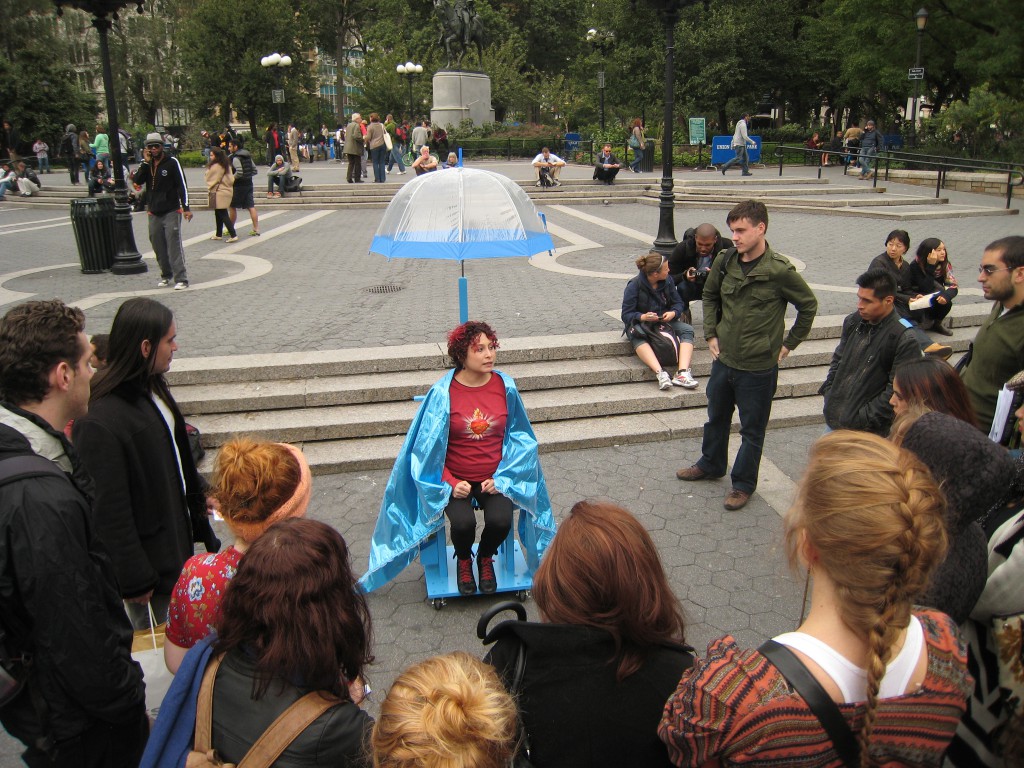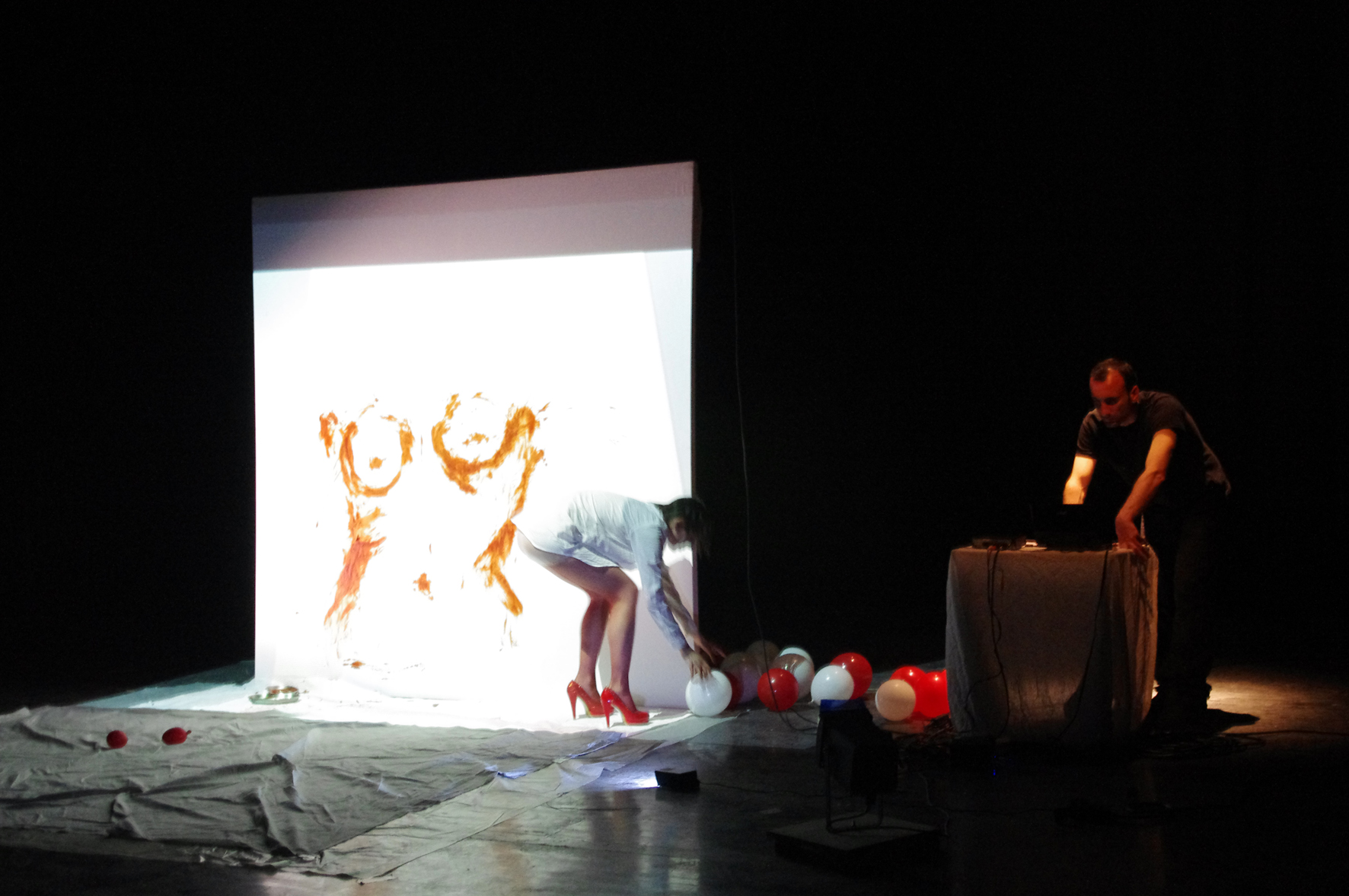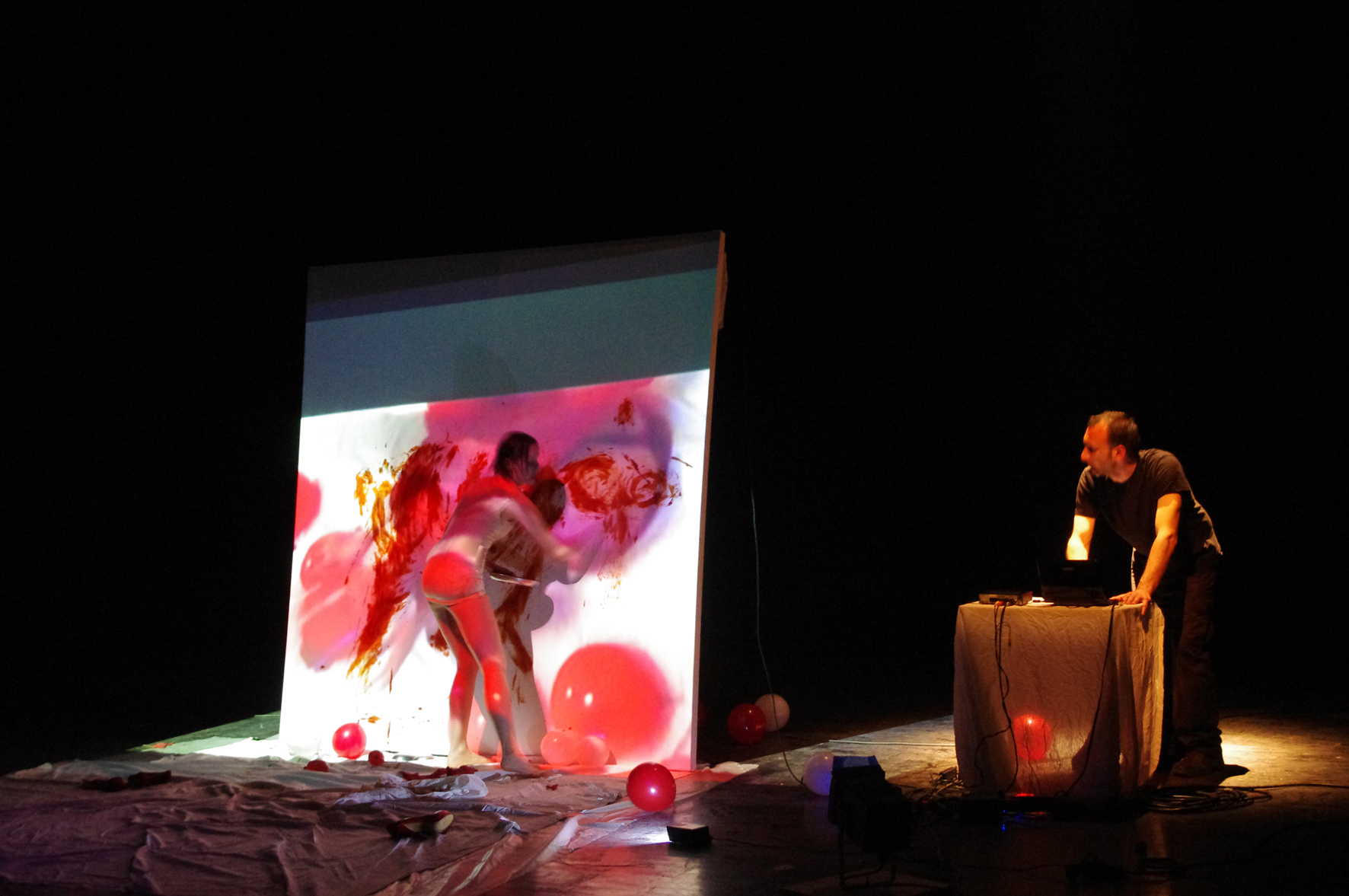By Bryanne Leeming
Performance artist, painter, photographer, videographer, social commentator, and creator of characters — Carolina Mayorga remains hard to define into a particular mold as she embodies so many. She is a presence made up of many different characters, yet always stays true to her Colombian roots. She majored in cultures in the states, which allows her to communicate her ideas through different types of art. By not focusing on one particular medium, she creates her own image as an artist in the way she lives her life and the messages she delivers in her work.
“I do a little bit of everything. Sometimes you’re not great at anything, which also gives you the opportunity to try many other things and combine different mediums. One of my first performance pieces was in 2005 and I’ve been doing it more often since then.”
Last year, at the AiOP festival, Carolina came dressed as a new character: The Miraculous Artist. She walked up and down 14th street in a vibrant outfit of contrasting colors selling prayer cards for a dollar each to passersby, claiming the cards would bring “health, prosperity, and love” to buyers.
Performance art has its roots in early avant-garde movements of Europe and the US such as Futurism, Dada, and Surrealism. Mayorga’s performances are less abstract than the early Dada performances in the Cabaret Voltaire, and instead are based on realistic characters in a satirical way. However, both start with social critiques and carry a strong message in a public platform. By including herself in her art, Carolina Mayorga personalizes the message, often focusing on themes of Colombian poverty, Latino stereotypes, and the dangers of large institutions and mass consumption.
AiOP: How do you compare performance art to other mediums? Do you find it easier to get your message across through performance art?
Mayorga: It depends on the concept. I think some things work better with performance art, where something else will work better in photography or video depending on the idea. One thing I like about performance art is that it’s immediate. You get it out of your chest very easily. Once it’s complete, you can move on to your next adventure. Compare that to other types of media where you can keep thinking about it after and it can take you so long to put it together that the concept can get lost in the technicalities. With performance art, when you’re finished it’s like a release and you can go on to your next project after.
AiOP: Where do your ideas come from?
Mayorga: Mostly from my Colombian background. I take a lot of inspiration from infomercials as well and ideas of consumption. I put together videos where it looks like I’m selling products from South America. I create characters. ‘The Miraculous Artist’ character is based on the Virgin Mary because I was raised Catholic in Colombia. When you’re born in Colombia, you’re born Catholic. You don’t choose it! I played with that and at the same time I turned it into an infomercial using a little bit of humor. I’m trying to push some ideas of what I think about religion and institutions.
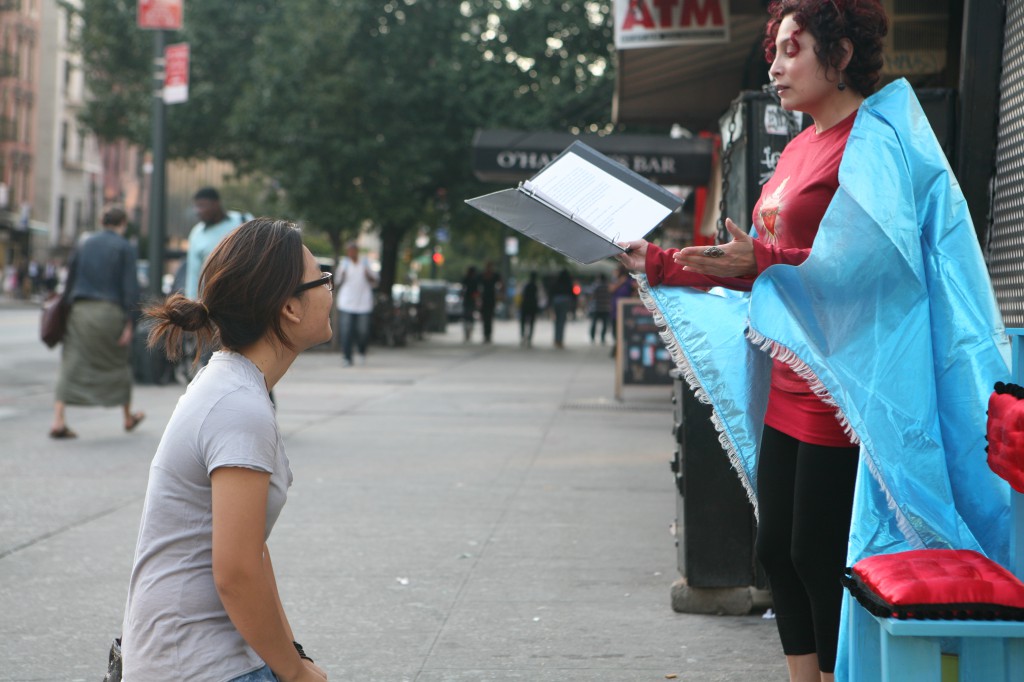
AiOP: Is it a social critique?
Mayorga: Yes, I would say it’s a critique of the institution and the way religion is presented to people. It sometimes becomes a sellable product. At AiOP, I was selling prayer cards and claiming that I would save people, bless them, and turn their lives around forever, and people were buying the cards! I always criticize consumerism in my work. They’re always selling you something! The ultimate goal of ‘The Miraculous Artist’ is not about changing people’s lives, it’s to make money.
I also did a project called ‘Newspaper Soup’. It was a piece I created based on my culture where people would sometimes use newspaper in soup. I decided to turn it into a product I could sell to an American audience, and people bought it! I was standing at a food cart in front of the Convention Center in LA and selling newspaper soup for 99 cents. It tastes salty and looks pretty gross because with the ink, it turns brown. It’s not very good looking, but it’s filling.
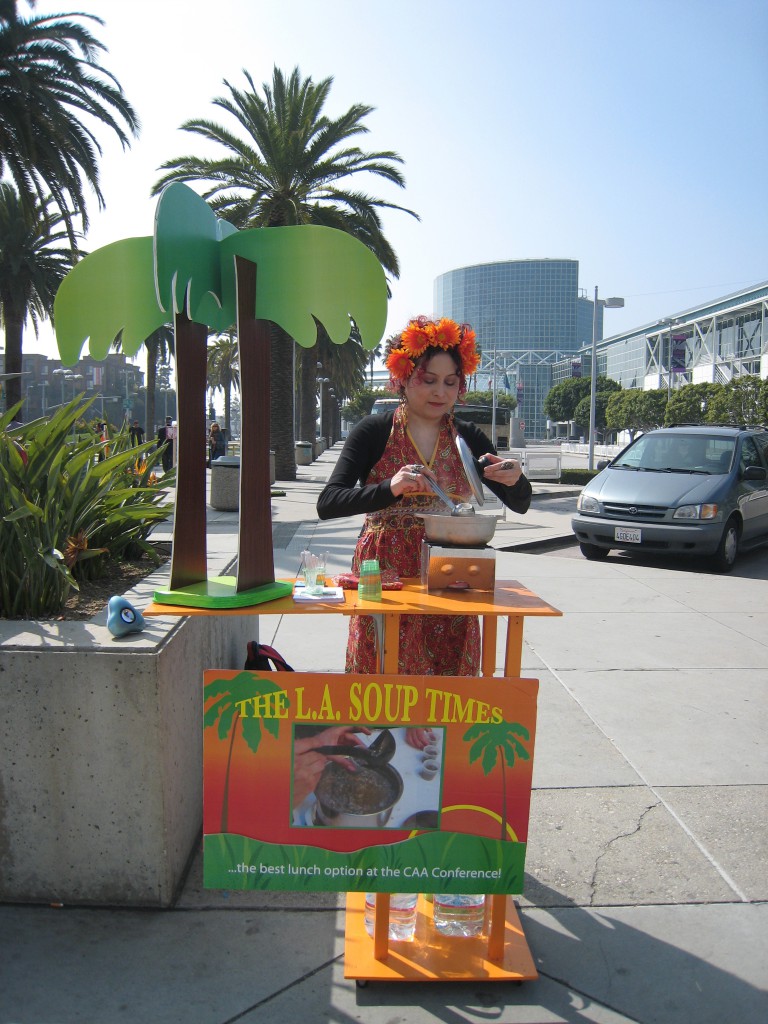
AiOP: It seems like location is an important part of your work as you have performed and displayed your art all around the world. How do you change your performances based on where you are?
Mayorga: Sometimes I change it, depending on location because I always want to connect to a local audience. When I did it here in New York, I said the card was dripped in the holy waters of the Hudson River to connect to New Yorkers. It allowed me to keep the main concept but always change it a little depending on where I am. In LA, I made a little palm tree out of cardboard and put it next to all the real palm trees.

